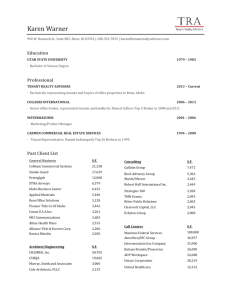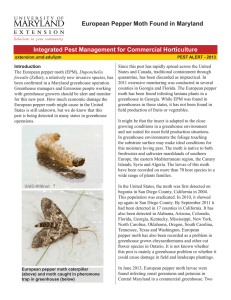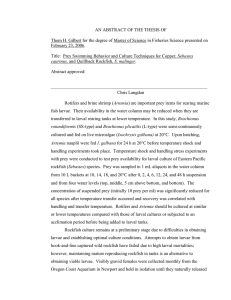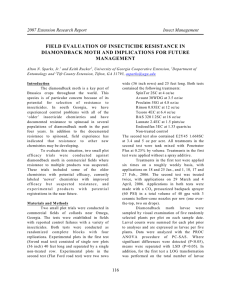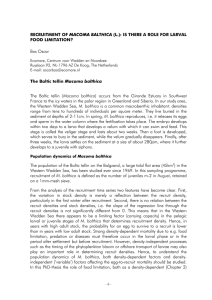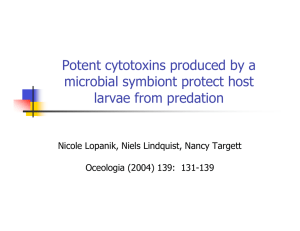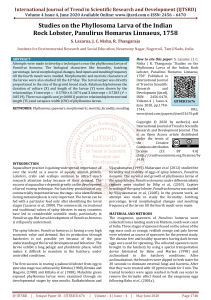Bradyrrhoa gilveolella on Rush Skeletonweed in Southern Idaho J. L. Littlefield
advertisement
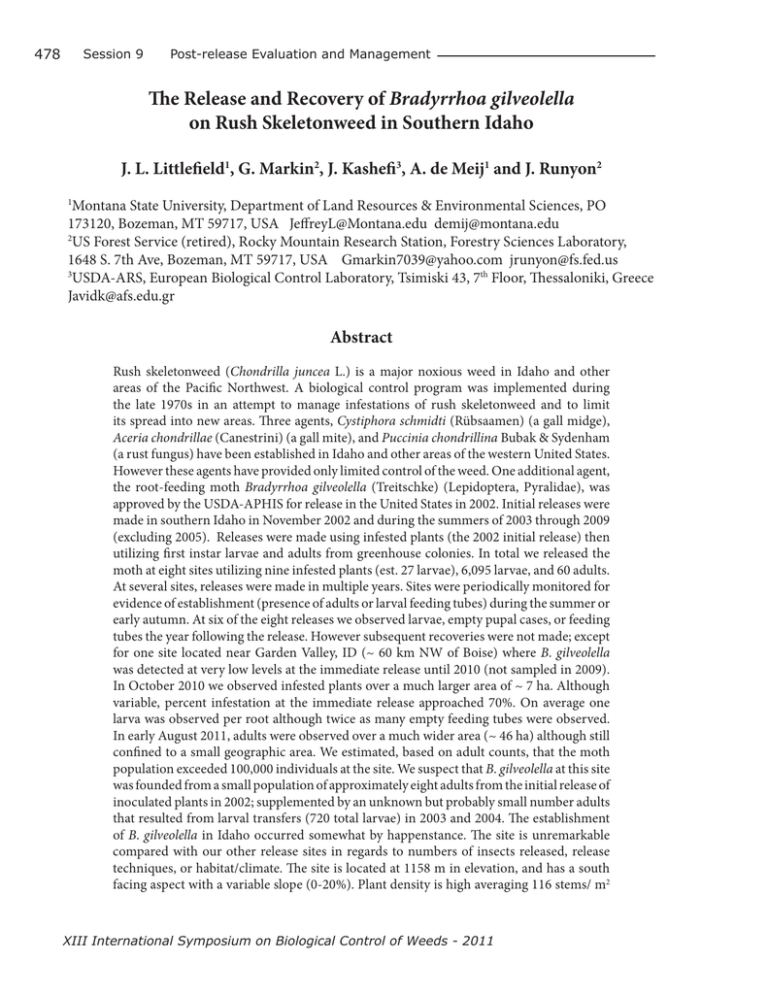
478 Session 9 Post-release Evaluation and Management The Release and Recovery of Bradyrrhoa gilveolella on Rush Skeletonweed in Southern Idaho J. L. Littlefield1, G. Markin2, J. Kashefi3, A. de Meij1 and J. Runyon2 Montana State University, Department of Land Resources & Environmental Sciences, PO 173120, Bozeman, MT 59717, USA JeffreyL@Montana.edu demij@montana.edu 2 US Forest Service (retired), Rocky Mountain Research Station, Forestry Sciences Laboratory, 1648 S. 7th Ave, Bozeman, MT 59717, USA Gmarkin7039@yahoo.com jrunyon@fs.fed.us 3 USDA-ARS, European Biological Control Laboratory, Tsimiski 43, 7th Floor, Thessaloniki, Greece Javidk@afs.edu.gr 1 Abstract Rush skeletonweed (Chondrilla juncea L.) is a major noxious weed in Idaho and other areas of the Pacific Northwest. A biological control program was implemented during the late 1970s in an attempt to manage infestations of rush skeletonweed and to limit its spread into new areas. Three agents, Cystiphora schmidti (Rübsaamen) (a gall midge), Aceria chondrillae (Canestrini) (a gall mite), and Puccinia chondrillina Bubak & Sydenham (a rust fungus) have been established in Idaho and other areas of the western United States. However these agents have provided only limited control of the weed. One additional agent, the root-feeding moth Bradyrrhoa gilveolella (Treitschke) (Lepidoptera, Pyralidae), was approved by the USDA-APHIS for release in the United States in 2002. Initial releases were made in southern Idaho in November 2002 and during the summers of 2003 through 2009 (excluding 2005). Releases were made using infested plants (the 2002 initial release) then utilizing first instar larvae and adults from greenhouse colonies. In total we released the moth at eight sites utilizing nine infested plants (est. 27 larvae), 6,095 larvae, and 60 adults. At several sites, releases were made in multiple years. Sites were periodically monitored for evidence of establishment (presence of adults or larval feeding tubes) during the summer or early autumn. At six of the eight releases we observed larvae, empty pupal cases, or feeding tubes the year following the release. However subsequent recoveries were not made; except for one site located near Garden Valley, ID (~ 60 km NW of Boise) where B. gilveolella was detected at very low levels at the immediate release until 2010 (not sampled in 2009). In October 2010 we observed infested plants over a much larger area of ~ 7 ha. Although variable, percent infestation at the immediate release approached 70%. On average one larva was observed per root although twice as many empty feeding tubes were observed. In early August 2011, adults were observed over a much wider area (~ 46 ha) although still confined to a small geographic area. We estimated, based on adult counts, that the moth population exceeded 100,000 individuals at the site. We suspect that B. gilveolella at this site was founded from a small population of approximately eight adults from the initial release of inoculated plants in 2002; supplemented by an unknown but probably small number adults that resulted from larval transfers (720 total larvae) in 2003 and 2004. The establishment of B. gilveolella in Idaho occurred somewhat by happenstance. The site is unremarkable compared with our other release sites in regards to numbers of insects released, release techniques, or habitat/climate. The site is located at 1158 m in elevation, and has a south facing aspect with a variable slope (0-20%). Plant density is high averaging 116 stems/ m2 XIII International Symposium on Biological Control of Weeds - 2011 Session 9 Post-release Evaluation and Management (range of 0 to 304 stems). The habitat is within the transition zone between Pinus ponderosa / Symphoricarpos albus and Purshia tridentata/Pseudoroegneria spicata types; with a granitic based sandy-loam soil. Mean annual temperature at the site is 8.3o C with annual rainfall of 615 mm, which is very similar to that of the collection site at Lake Prespa in northwestern Greece. We are presently examining the phenology of this population, working to develop effective collection and release techniques, and assessing the impact of B. gilveolella. XIII International Symposium on Biological Control of Weeds - 2011 479



